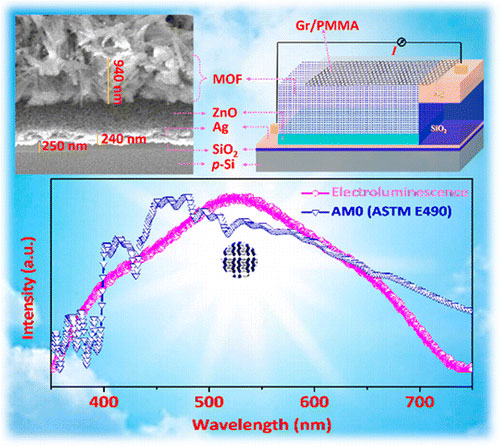| Posted: Aug 31, 2016 |
Lowering the cost and environmental footprint of white LEDs with MOFs and graphene
(Nanowerk News) Replacing traditional light bulbs with light-emitting diodes (LEDs) could take a significant bite out of global energy consumption. But making white LEDs isn't completely benign or budget friendly. To help reduce the environmental footprint and cost of these lights, researchers have developed the first white LED with a hybrid, metal-organic framework material.
|
|
Their report appears in the journal ACS Nano ("Electrically Driven White Light Emission from Intrinsic Metal–Organic Framework").
|
 |
| Researchers have designed and demonstrated a direct WLED consisting of a strontium-based metal–organic framework (MOF), graphene, and inorganic semiconductors, which can generate a bright white light emission. In addition to the suitable design of a MOF structure, the demonstration of electrically driven white light emission based on a MOF is made possible by the combination of several factors including the unique properties of graphene and the appropriate band alignment between the MOF and semiconductor layer.
|
|
Widespread use of low-power, long-lasting LEDs in the U.S. could save nearly 348 terawatt-hours by 2027, which equals the annual output of 44 power plants, according to the U.S. Department of Energy. But white LEDs are currently made with rare-earth elements, and mining these minerals can be costly and produce toxic waste. Additionally, existing commercial methods for producing white LEDs involve multiple components and steps that reduce efficiency and quality.
|
|
So, Kuang-Lieh Lu, Yang-Fang Chen and colleagues developed more cost-effective and environmentally friendly white LEDs using graphene and a strontium-based, metal-organic framework (MOF) that does not include rare-earth elements. MOFs comprise a promising new class of hybrid materials made of metallic ions and organic ligands. Testing showed that the devices' emission spectrum was close to that of natural sunlight.
|

